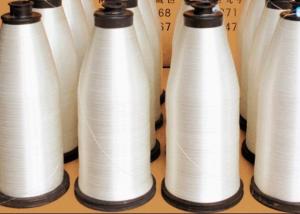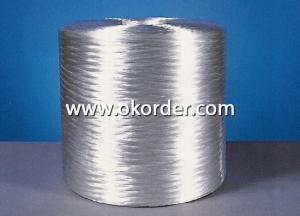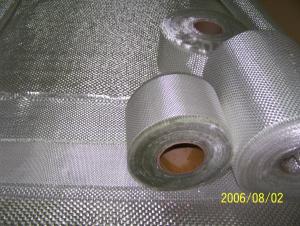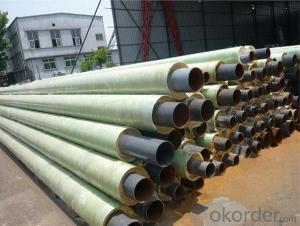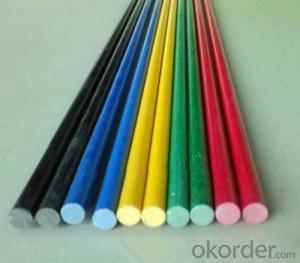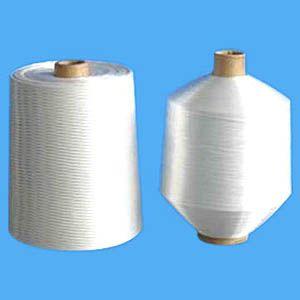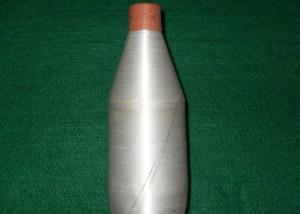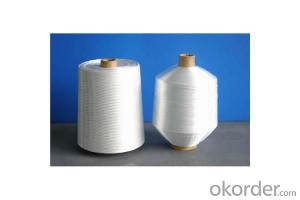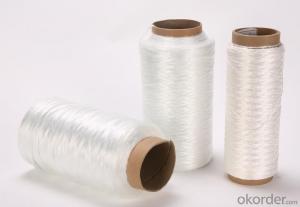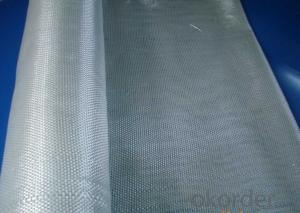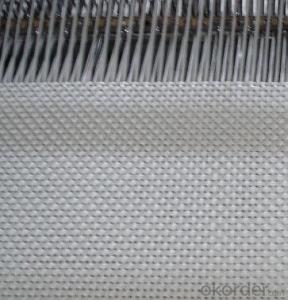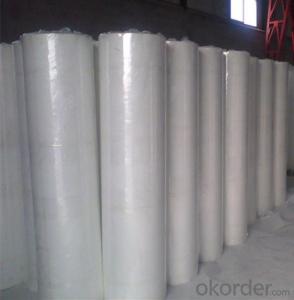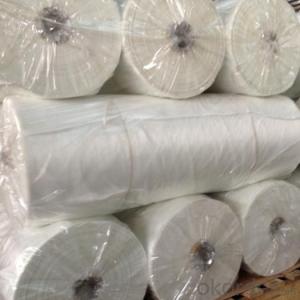Fiberglass Yarn EC8-24C5-11
- Loading Port:
- China Main Port
- Payment Terms:
- TT or L/C
- Min Order Qty:
- 1Ton kg
- Supply Capability:
- 100000Kg/Month kg/month
OKorder Service Pledge
OKorder Financial Service
You Might Also Like
Packaging & Delivery of Fiberglass Yarn EC8-24C5-11
Specifications of Fiberglass Yarn EC8-24C5-11
E-glass fiberglass twisted yarn is made of E glass, paraffin infiltration agent treatment.
Uniform and stable linear density
1.Uniform and stable linear density
2.Good sizing protection,low fuzz
3.high tensile strength of monofilament
4.Easy to impregnate with resin
Application of Fiberglass Yarn EC8-24C5-11
Engineering plastics,electrical insulation,cable coating,communications equipment,appliances,building materials,etc.
Product specification
Code description of Fiberglass Yarn EC8-24C5-11
Example: EC8-24*1*2 S110
E: glass type; C: continuous filament; 8: filament diameter; 24: linear density;
1: the number of reversing shares
2: the number of assembled shares; S: twist direction; 110; twist number

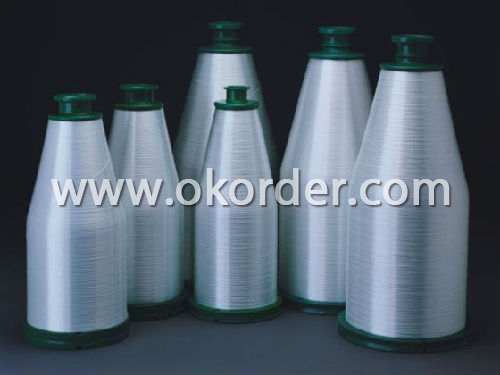
- Q:What are the common shrinkage rates of fiberglass yarn?
- The common shrinkage rates of fiberglass yarn can vary depending on various factors such as the manufacturing process, fiber composition, and specific application. However, on average, fiberglass yarn typically experiences a shrinkage rate of around 2-5%.
- Q:Can fiberglass yarn be used for making upholstery cushions?
- Indeed, upholstery cushions can be fashioned using fiberglass yarn. Renowned for its remarkable robustness and endurance, fiberglass yarn proves to be a fitting substance for such cushions. It offers exceptional support and resilience, guaranteeing the maintenance of the cushions' form and composition throughout the passage of time. Furthermore, fiberglass yarn exhibits resistance against moisture, mildew, and insects, rendering it a pragmatic selection for upholstery purposes. Nevertheless, it is crucial to acknowledge that fiberglass yarn can possess an abrasive nature. Consequently, it is commonly employed in conjunction with gentler materials to furnish comfort and avert any potential skin irritation.
- Q:How does the surface energy of fiberglass yarn impact its bonding to other materials?
- The surface energy of fiberglass yarn plays a crucial role in determining its bonding capability with other materials. Surface energy refers to the amount of energy required to increase the surface area of a material. It is influenced by the molecular structure and composition of the material's surface. In the case of fiberglass yarn, higher surface energy enhances its ability to bond with other materials. This is because a material with high surface energy has a strong attraction to other materials, allowing for better adhesion. When the surface energy of fiberglass yarn is high, it forms stronger bonds with other materials, resulting in improved overall bonding strength. On the other hand, if the surface energy of fiberglass yarn is low, it will have a weaker affinity for other materials, leading to poor bonding. In such cases, the bonding between the fiberglass yarn and other materials may be weak, resulting in reduced adhesion and potential delamination. To optimize the bonding between fiberglass yarn and other materials, it is essential to consider the surface energy compatibility. Matching the surface energy of the fiberglass yarn with the surface energy of the other material being bonded can significantly enhance the adhesion and overall bonding strength. This can be achieved by modifying the surface energy of either the fiberglass yarn or the other material through various surface treatment techniques, such as corona treatment, plasma treatment, or chemical modification. In summary, the surface energy of fiberglass yarn directly impacts its bonding capability with other materials. Higher surface energy promotes stronger bonding, while lower surface energy may result in weaker adhesion. By understanding and manipulating the surface energy, one can optimize the bonding of fiberglass yarn with other materials, ensuring enhanced adhesion and improved overall performance.
- Q:Can fiberglass yarn be used in the production of curtains and blinds?
- Curtains and blinds can indeed be produced using fiberglass yarn. This versatile material possesses numerous advantages for curtains and blinds. Notably, it is lightweight, durable, and resistant to heat, fire, and chemicals. Moreover, fiberglass yarn is renowned for its exceptional insulation properties, which aid in maintaining desired room temperatures. Additionally, it boasts high tensile strength, making it ideal for crafting robust and long-lasting curtains and blinds. The inclusion of fiberglass yarn in curtains and blinds offers improved privacy, light control, and defense against harmful UV rays. All in all, fiberglass yarn represents a dependable and pragmatic choice for the production of curtains and blinds, delivering both aesthetic appeal and functional benefits.
- Q:What are the different widths available for fiberglass yarn fabrics?
- The different widths available for fiberglass yarn fabrics typically range from 1 inch to 60 inches, depending on the specific needs and requirements of the project.
- Q:Can fiberglass yarn be used for making scarves?
- Yes, fiberglass yarn can be used for making scarves. However, it is not a commonly used material for scarves as it may not provide the desired comfort and warmth compared to traditional yarns like wool or acrylic. Additionally, fiberglass yarn can be irritating to the skin and may cause discomfort if not handled properly.
- Q:What is the melting point of fiberglass yarn?
- The composition and manufacturing process of fiberglass yarn can cause variations in its melting point. Typically, fiberglass yarn is created by melting glass fibers and drawing them into thin strands. These strands are then twisted or plied together to form the yarn. The glass fibers used in fiberglass yarn have a melting point of approximately 1,400 to 1,600 degrees Celsius (2,552 to 2,912 degrees Fahrenheit). However, it's important to note that the yarn itself may have a lower melting point due to the twisting or plying process, which can impact the material's thermal properties. Additionally, it's worth mentioning that even though fiberglass yarn has a high melting point, it can still experience degradation or damage at lower temperatures. Prolonged exposure to temperatures above 200 degrees Celsius (392 degrees Fahrenheit) can lead to a loss of strength and structural integrity in the yarn. Therefore, it is crucial to consider the specific application and temperature requirements when using fiberglass yarn to ensure optimal performance and durability.
- Q:How does the moisture resistance of fiberglass yarn compare to other materials?
- The moisture resistance of fiberglass yarn is generally considered to be excellent when compared to other materials. Fiberglass is inherently water-resistant and does not absorb moisture easily. This characteristic makes it suitable for various applications where exposure to moisture or humidity is a concern. Unlike natural fibers such as cotton or wool, which tend to absorb water and become weakened, fiberglass yarn remains strong and durable even in wet conditions. Additionally, fiberglass yarn does not promote the growth of mold or mildew, making it an ideal choice for areas with high moisture levels. Overall, the moisture resistance of fiberglass yarn is superior to many other materials commonly used in textiles and other industries.
- Q:Does fiberglass yarn shrink when exposed to high temperatures?
- Yes, fiberglass yarn does shrink when exposed to high temperatures. Fiberglass is made from molten glass that is pulled into fine fibers and then woven into yarn. When subjected to heat, the glass fibers in the yarn contract and shrink. This can cause a reduction in the overall length and diameter of the yarn. It is important to consider this shrinkage effect when using fiberglass yarn in applications where high temperatures are expected, as it may impact the performance and dimensional stability of the material.
- Q:Can fiberglass yarn be used for making upholstery fabrics?
- Yes, fiberglass yarn can be used for making upholstery fabrics.
1. Manufacturer Overview |
|
|---|---|
| Location | Shandong, China |
| Year Established | 2008 |
| Annual Output Value | US$ 5 Million - US$ 10 Million |
| Main Markets | North America, Eastern Europe, Southeast Asia, Mid East, Eastern Asia |
| Company Certifications | |
2. Manufacturer Certificates |
|
|---|---|
| a) Certification Name | |
| Range | |
| Reference | |
| Validity Period | |
3. Manufacturer Capability |
|
|---|---|
| a)Trade Capacity | |
| Nearest Port | Qingdao |
| Export Percentage | 41%-50% |
| No.of Employees in Trade Department | 3-5 People |
| Language Spoken: | English, Chinese |
| b)Factory Information | |
| Factory Size: | 10400 square meters |
| No. of Production Lines | Above 10 |
| Contract Manufacturing | Design Service Offered Buyer Label Offered |
| Product Price Range | Average |
Send your message to us
Fiberglass Yarn EC8-24C5-11
- Loading Port:
- China Main Port
- Payment Terms:
- TT or L/C
- Min Order Qty:
- 1Ton kg
- Supply Capability:
- 100000Kg/Month kg/month
OKorder Service Pledge
OKorder Financial Service
Similar products
New products
Hot products
Related keywords
